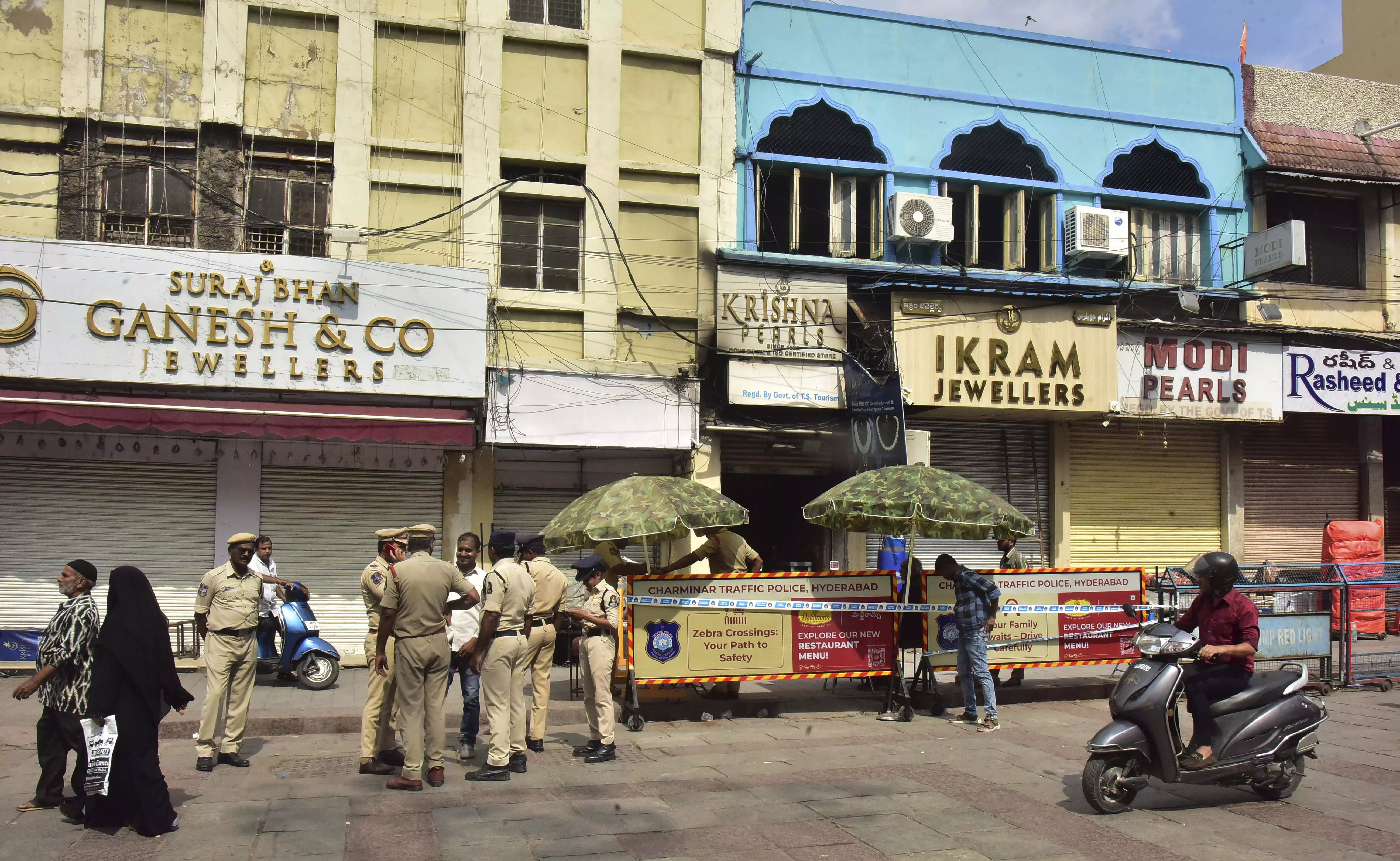Short Circuit Triggered Gulzar Houz Fire: Officials
They say Modis tried to douse fire on their own, it turned fatal

Hyderabad: The preliminary investigation into the deadly fire at Gulzar Houz that claimed 17 lives has identified a short circuit as the cause. Fire forensic experts from Nagpur found that sparks originated from a welcome board around 5 am and spread to an adjacent air conditioner, triggering an explosion.
Director general of disaster management and fire services Y. Nagi Reddy said the fire began on the ground floor at the display unit of Sri Krishna Pearls. The space was lined with plywood on the sides and ceiling, making it highly flammable. Furniture and materials caught fire quickly, and with oxygen entering through a side passage, the enclosed space turned into a “pressure cooker,” he said. The flames eventually spread to the first floor.
According to sources, the owners, instead of alerting police or fire personnel, attempted to control the fire themselves for nearly 40 minutes. One employee who noticed the flames alerted another family member and they began dousing the blaze with water. Meanwhile, the family on the first floor, in a bid to escape the fire, took shelter in a single room next to the stairwell. Smoke entered through the stairs, and all 17 individuals died of asphyxiation.
Power supply from the main line had been shut off as part of routine practice, but an inverter continued to supply electricity, which may have contributed to the spread. Fire investigation was conducted by Mahipal Reddy, senior fire consultant from Hyderabad, and Nilesh Ukunde, a fire forensic engineer from Nagpur. A detailed report will be submitted to the director general shortly.
Refuting claims of water shortage, Nagi Reddy said fire vehicles had adequate water, with one vehicle having refilled just a day prior. He added that all emergency response details, including calls, dispatches and water levels, are recorded and verifiable.
Highlighting systemic issues, Nagi Reddy stressed that 90 per cent of fire incidents occur in non-high-rise residential buildings, which lack mandatory safety certifications. “Buildings below 15 metres aren’t required to have an NOC and often skip installing basic safety equipment,” he said. “In contrast, high-rises follow regulations, have escape routes, and are better equipped.”
He urged homeowners to invest in essential fire safety gear. “For a 3BHK house, safety equipment including smoke detectors, sprinklers and alarms costs around Rs 12,000—roughly the cost of one square foot of construction,” he said. “But safety is often neglected.”
He also noted that water hydrants remain the best firefighting resource, though they may interfere with drinking water pipelines. He blamed recent fire casualties on buildings that failed to secure NOCs or follow safety norms. “In many summer accidents, victims included family members visiting on vacation. These tragedies are preventable,” he added.

